A weekend in Matera, Italy
‘Tragically beautiful’ Matera has gone from rags to riches over the past century. Evacuated in the 1950’s for rampant poverty and disease; Matera was awarded the UNESCO World Heritage Site status in 1993 and 2019 as the European Cultural Capital.
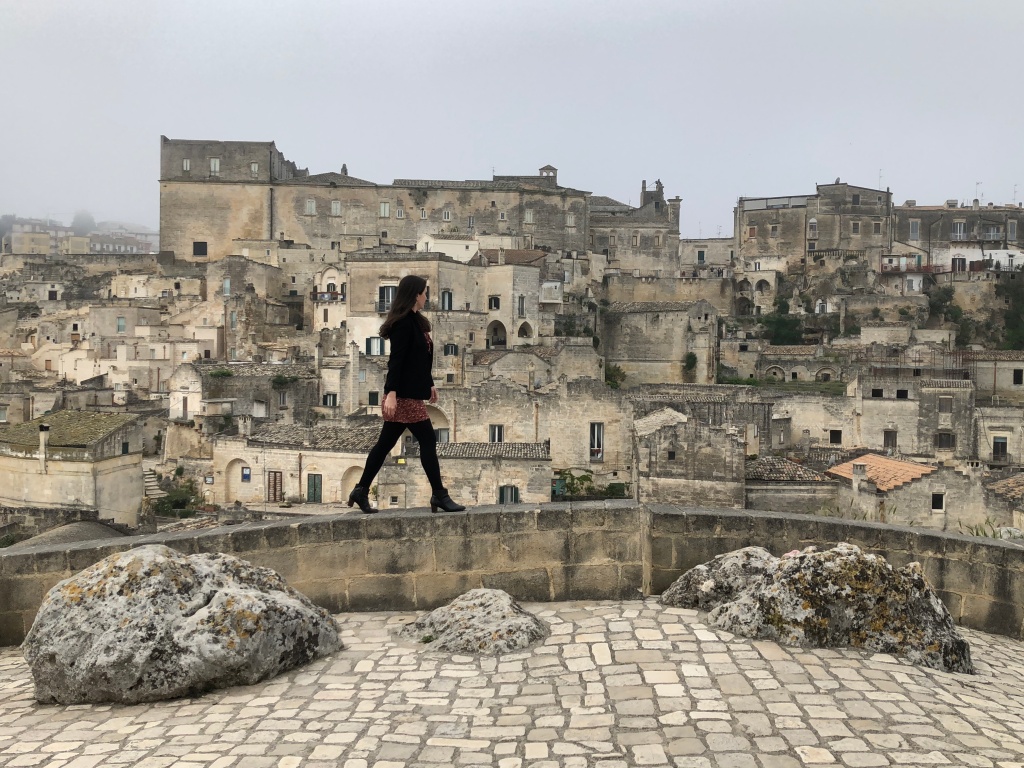
Matera has been inhabited since the Paleolithic time. In ancient times, cave-dwelling (not to be confused with cavemen) settlers moved into the tofu rock caverns of the steep ravine. During the Neolithic Revolution these early dwellers learned to breed animals and eventually became herders and farmers, which they remained until the 20th century. Eventually more people moved in and the community of cave-like dwellings became known as the Sassi (Italian for “the stones”). You may recognize it as the backdrop for Jesus walking with the cross in Mel Gibson’s 2004 movie, The Passion of the Christ.
Having never had a ‘golden era’ for art and culture, Matera’s development has never been preserved in a time period. History has not been destroyed to glorify ornate palaces and city buildings stuck in time when the city flourished (such as Florence during the Renaissance and Venice in the Middle Ages). Therefore each house, or one could even say the city as a whole, has been continuously developed in a way mirroring the continuous human development.
In the 1940’s Carlos Levy, physician, painter and author was sent to exile in the south of Italy for anti-Fascist sentiments. Shocked by the rampant malaria and cholera he described the region as “a schoolboy’s idea of Dante’s Inferno” in a book about his year in exile. This propelled Matera into the public eye as Italy’s “la vergogna nazionale” (‘Shame of the Nation’). Levy’s book can be compared to Jacob Riis’ How the Other Half Lives: Studies among the Tenements of New York which propelled the United States to create social reform nearly a half century before.
Accommodation: We stayed in a carefully renovated, beautiful cave hotel called Corte San Pietro. I would recommend this distinct experience. If you want to read about a few of the other unique accommodation experiences in the south of Italy I wrote about it here: A Trulli, a Cave, and a Masseria oh my!
Getting there: this is the hardest part. Matera was a part of a week-long vacation in the Puglia region of Italy. We chose to take a train to Bari (so that we didn’t have to drive from Rome) and then rent a car. Renting a car is the easiest way to get around this region of Italy. There is a regional train that services Matera from Bari and runs everyday except Sundays.
I would recommend reading Carlos Levy’s book ‘Cristo si è fermato a Eboli’ or Christ Stopped at Eboli, about his year in exile in the Basilicata region of Italy.
My friend, Jen, from World On a Whim, recommended a ten day vacation to the Puglia region and Matera. We spent two nights and two days in Matera, and we felt that was the perfect amount of time.
Friday:

Arrive into Matera. No amount of scrolling through photos prepared me for the utter awe that I felt when I arrived at the top of the sassi and was blasted with 180 degree falling views of the ancient ravine. Definitely take some time to let it sink in. In our case, we were in a car and that minute went on too long and we were quickly interrupted with honking from a car behind us! Nothing like modern traffic to bring you back to present. Get settled into your accommodation and get dinner in the sassi for your first night.
Saturday:
Start your morning in the new town at no frills Caffè Schiuma di Rocco Luigi Schiuma (Via T. Stigliani, 92). Spend a little bit of time walking around the Civic Center of the new town of Matera. I am recommending this, because I personally think it is interesting to see the more modern developed sections as a comparison to the Sassi.
The Sassi is best explored on foot. The whole city is walkable, so definitely pack good shoes because the incline and roads have been smothered over from so many pedestrians. I would recommend starting at Casa Noha (Recinto Cavone, 9) for a foundation of the history of Matera. They have multimedia displays, large video projections on the walls, and you move from different rooms to make the exhibit a little more interactive. Spend a few hours walking around the two Sasso Barisano and the Sassi Caveoso. Sassi Brisano is where all the shops and hotels are, whereas Sassi Caveoso is mostly caves. Briefly check out the Church of Saint Mary of Idris (Via Madonna dell’Idris). Make your way to Cathedral of Saint Mary ‘della Bruna’ and Saint Eustace in the Piazza Duomo. This cathedral is the highest point in Matera and is the middle point between the two Sassis.
In the early evening, get into your car and head to sunset at Asceterio di Sant’Agnese (Contrada Murgia Timone, 75100) or Belvedere di Murgia Timone. We plugged this address into the GPS, but had to park a little away in a parking lot. Make sure to leave to get settled before sunset and explore the green area and the isolated caves in the area.
Your accommodation should be able to recommend some restaurants based on your preferences. We ate at Da Zero (Via Madonna delle Virtù, 13) and loved the pizza. I would recommend getting an evening glass of wine at Enoteca Dai Tosi (Via Bruno Buozzi, 12) in one of the cozy alcoves. To enter you take a steep set of stairs into a cavernous interior that was a former cistern for drinking water.
Sunday:
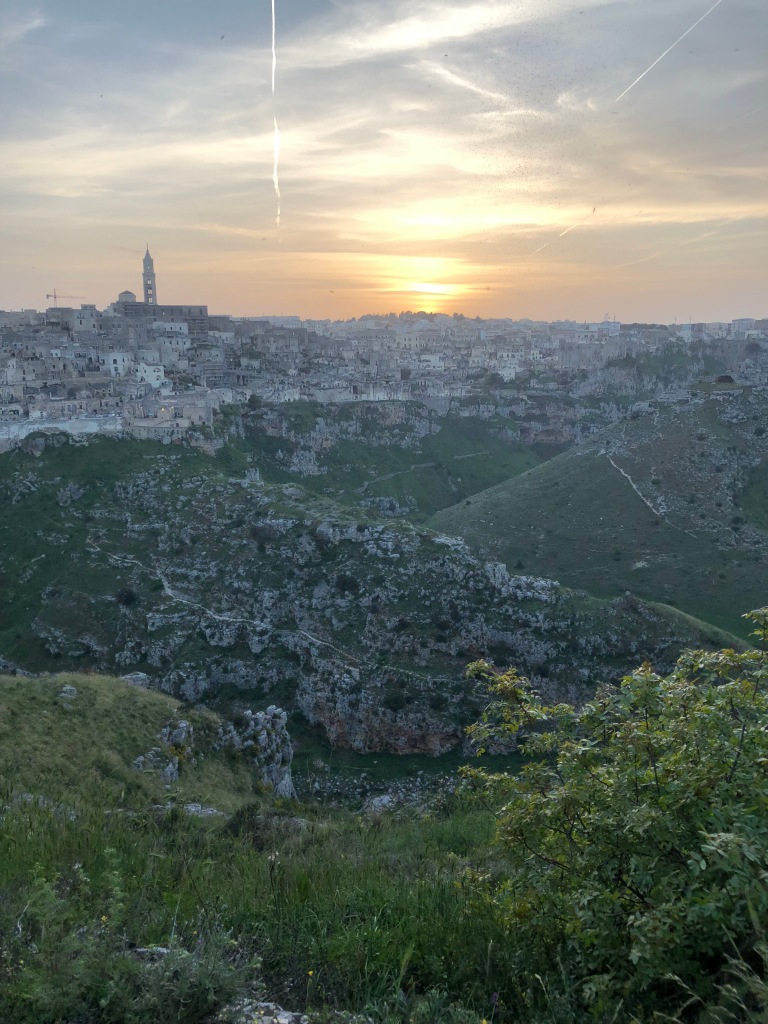
Get a coffee and pastry at Caffè Vergnano 1882 (Via del Corso, 78) then ONLY if you are as big of a nerd as I am, I would recommend going to Museo di Palazzo Lanfranchi (Piazetta Pascoli 1). The Palazzo itself is intriguing architecturally speaking. Yet, I truly went just to see Carlos Levy’s moving large installation portraying the poverty in the 20th century that led to his book.
The museum is located in Belvedere di Piazza Giovanni Pascoli (Piazzetta Pascoli) which offers a wonderful view of the Sassi from the new town and should not be missed. Again, spend your day walking around the Sassi. I went to the La Casa Grotta di Vico Solitario (Vico Solitario, 11), which I realize is the 3rd museum in two days but I truly wanted to see what it would actually feel like to live here back in the 20th century.
Get a cocktail at Area 8 (Via Casalnuovo, 15) this area, which encompasses Enoteca Dai Tosi, can be very lively at night with college students and it’s great for people watching.
Cheers to a great weekend in Matera!
If you are exploring the Southern region of Italy, check out my itineraries for the Locorotondo and Martina Franca.
Thank you to my friends Jen and Allison for being my travel companions! Check out Jen’s blog at worldonawhim.com

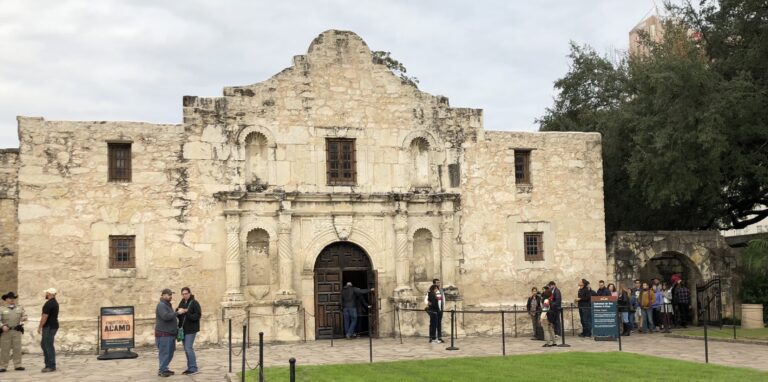
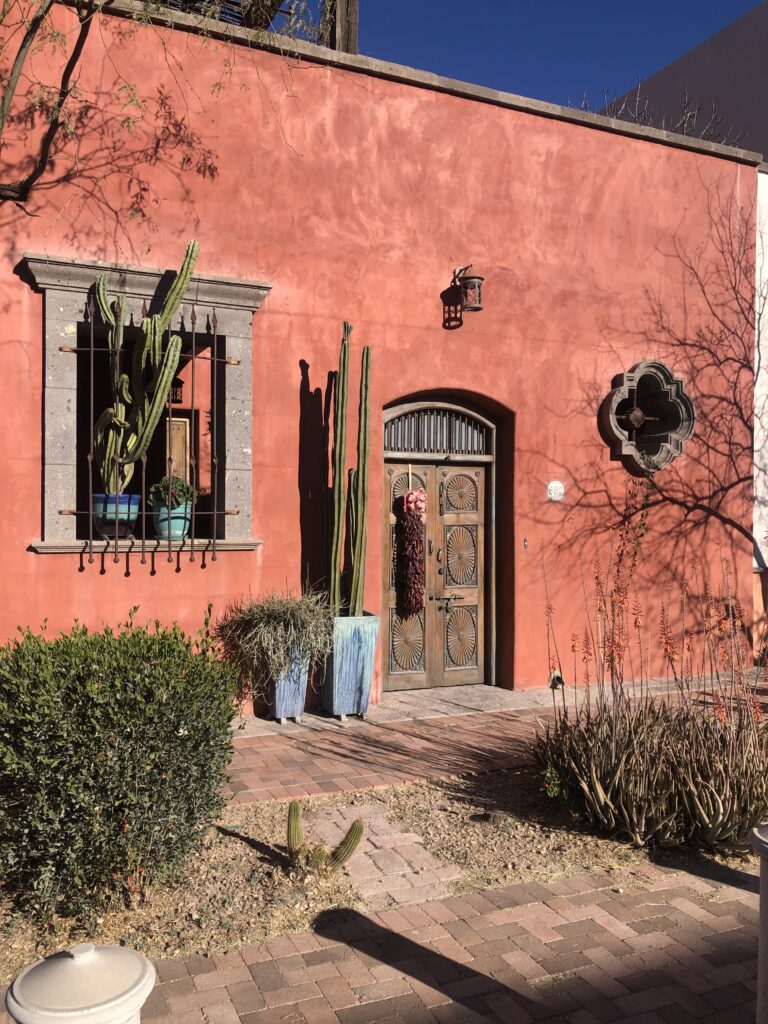
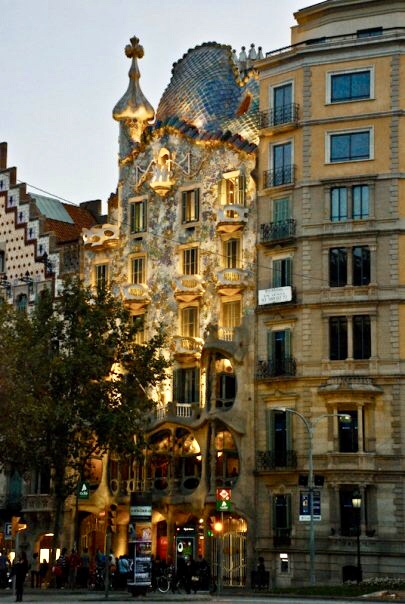
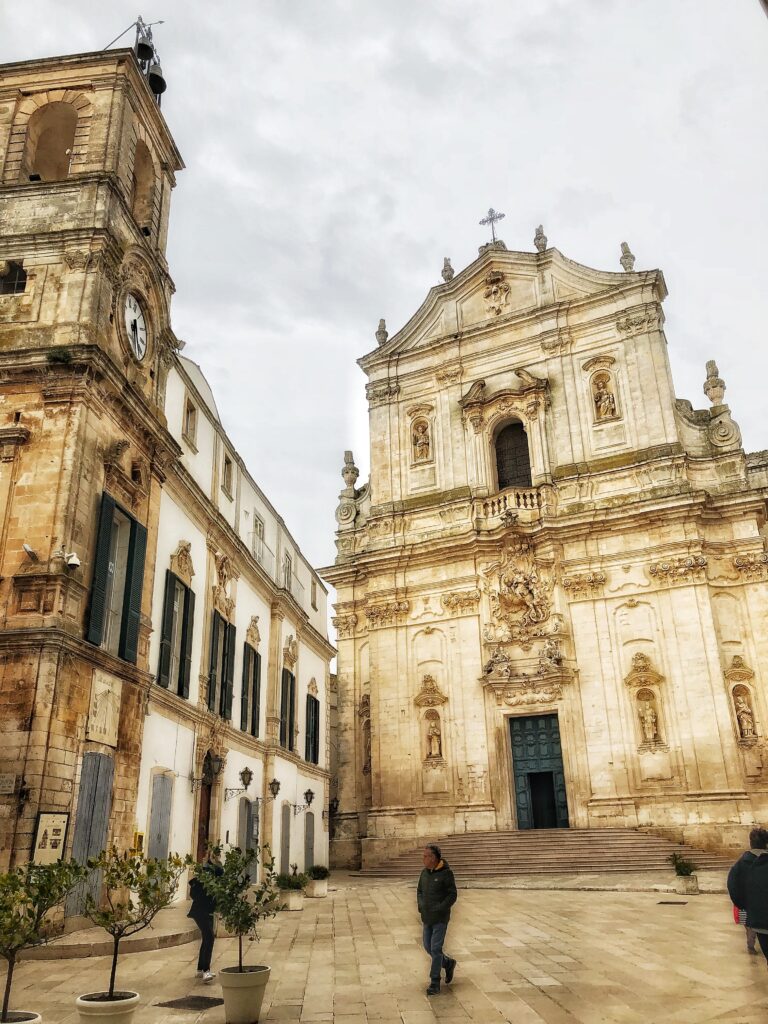
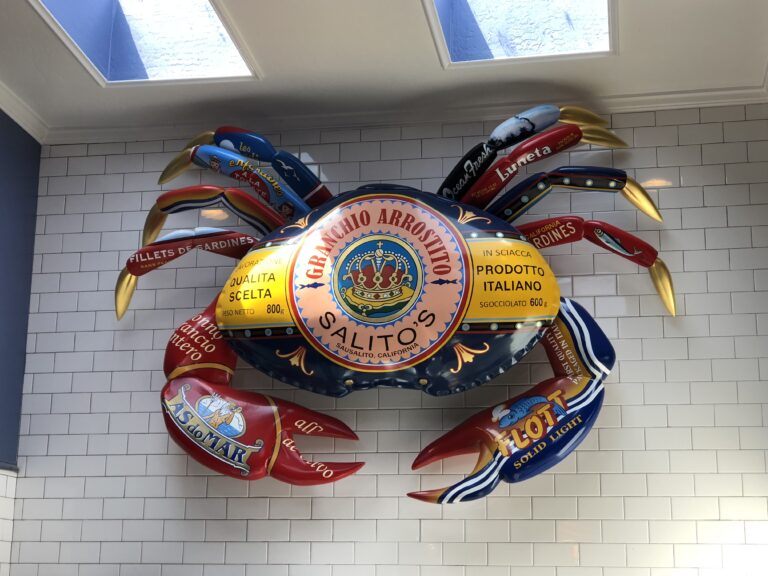
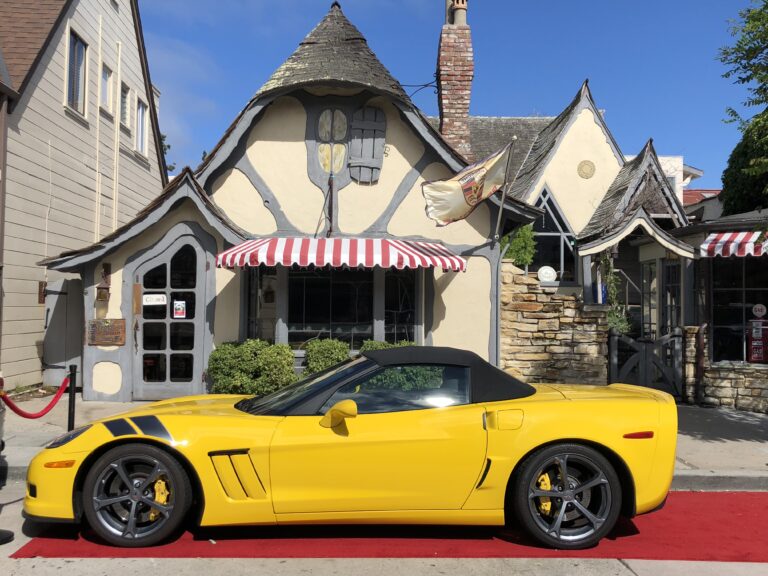
9 Comments